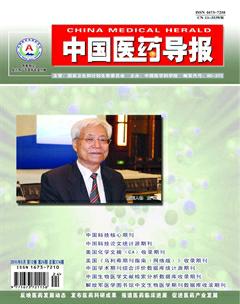肝门部纤维板块对胆道闭锁腹腔镜手术的影响分析
2015-09-11吴宙光王斌冯奇等
吴宙光 王斌 冯奇等


[摘要] 目的 探讨胆道闭锁患儿有无肝门部纤维板块对腹腔镜Kasai术的影响。 方法 回顾性分析2011年1月~2015年1月深圳市儿童医院经腹腔镜Kasai术治疗的Ⅲ型胆道闭锁患儿69例,根据术中探查有无肝门部纤维板块将其分为两组,其中肝门部存在纤维板块47例为研究组,肝门部未见明显纤维板块22例为对照组。比较两组的肝门部切除平面面积、手术时间、术中出血量、中转开放率、术后转入PICU病房率等数据。 结果 研究组肝门部切除平面面积[(6.1±1.8)cm2]大于对照组[(4.1±1.5)cm2],差异有统计学意义(P < 0.05);研究组手术时间[(4.8±1.8)h]及术中出血量[(37.0±11.2)mL]均多于对照组[(3.4±1.2)h、(25.0±10.8)mL],差异有统计学意义(P < 0.05);研究组术后转入PICU病房率(40.4%)高于对照组(18.2%),差异有统计学意义(P < 0.05);但两组中转开放手术率比较(4.3%比4.5%),差异无统计学意义(P > 0.05)。 结论 对于有肝门部纤维板块的胆道闭锁,腹腔镜Kasai术在肝门部切除的面积较广,手术难度及手术风险更大,术中需更加谨慎。
[关键词] 胆道闭锁;腹腔镜;Kasai术;肝门
[中图分类号] R726.5 [文献标识码] A [文章编号] 1673-7210(2015)08(c)-0018-04
[Abstract] Objective To explore the effect of biliary atresia on laparoscopic Kasai operation for children with and without hilar fiber plate. Methods From January 2011 to January 2015 in Shenzhen, Children's Hospital, 69 children with type Ⅲ biliary atresia underwent laparoscopic Kasai operation were selected, according to whether intraoperative detection without hilar fiber plate or not, they were divided into two groups, 47 cases of hilar existing fiber plate were as study group, and 22 cases of no obvious fiber plate in hilar were as control group. Hilar resection plane area, operation time, amount of bleeding during operation, conversion to open rate and postoperation transferred to PICU ward rate of two groups were compared. Results hilar average resection plane area of study group [(6.1±1.8)cm2] was more than that of control group [(4.1±1.5)cm2], the difference was statistically significant (P < 0.05); operation time [(4.8±1.8)h] and intraoperative bleeding [(37.0±11.2)mL] were more than those of control group [(3.4±1.2)h, (25.0±10.8)mL], the differences were statistically significant (P < 0.05); postoperation transferred to the PICU ward rate (40.4%) was higher than that of control group (18.2%), the differences were statistically significant (P < 0.05); but conversion to open rate of two groups were compared, the difference was not statistically significant (P > 0.05). Conclusion For the biliary atresia which has hilar fiber plate, the hilar resection area in laparoscopic Kasai operation is broader, the operation is more difficult, the risk of operation is higher and should be paid more attention to the operation process.
[Key words] Biliary atresia; Laparoscopy; Kasai operation; Hilar
胆道闭锁(biliary atresia,BA)是儿童最常见的严重肝脏疾病,以肝内和肝外胆管进行性炎症和纤维性梗阻为特征,从而导致胆汁排泄障碍以及进行性的肝纤维化[1]。按日本小儿外科学会分类方法,胆道闭锁可分为三个类型,其中最常见的是以肝门部闭锁为主要表现的Ⅲ型胆道闭锁,比例大约占胆道闭锁患儿的84.1%[2]。而Ⅲ型胆道闭锁根据其肝门部上的病理解剖可分为两类,一类为肝门部存在纤维板块组织,另一类为肝门部无纤维板块组织[3]。Kasai术是当前治疗Ⅲ型胆道闭锁的重要手段。随着微创外科技术的发展,腹腔镜Kasai术的报道越来越多,Ⅲ型胆道闭锁的腹腔镜手术以其微创及精准的解剖视野优势,已逐渐受学界的重视[4]。越来越多的研究表明,肝门部存在纤维板块组织的胆道闭锁,Kasai术后预后较好[5-6]。因此,有必要对该类型的胆道闭锁腹腔镜手术进行研究。本文将回顾性分析深圳市儿童医院(以下简称“我院”)收治的Ⅲ型胆道闭锁腹腔镜手术69例病例,探讨肝门部纤维板块对腹腔镜Kasai术的影响。现将结果报道如下:
